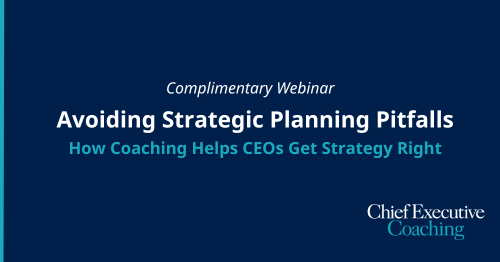
Leadership dysfunctions in CEOs come in all types. For some, these dysfunctions are moderate. In others they’re lethal: the business severely underperforms—and they get fired.
As a CEO, it’s essential that you recognize and fix these deadly dysfunctions. Or else, in a hypercompetitive business world, you risk missing the mark and losing your job. Here are 3 key dysfunctions, and how to avoid them.
1. Failing to admit your mistakes. To most CEOs, accountability means holding people’s feet to the fire. But that couldn’t be further from the truth. A real culture of accountability exists when your employees feel free and safe to claim personal responsibility for their mistakes.
How do you handle your own mistakes? If you deny or blame, what are you teaching your employees? No leader worth his salt would deny or blame consciously. Still, if admitting your mistakes were easy, you presumably wouldn’t be frustrated with the lack of accountability in your company.
If you want your employees to stand up and acknowledge their mistakes, then do this: offer no-hedging admissions and apologies for your own. How overtly you model accountability and transparency will dictate how safe your people feel to do the same. If you don’t do it, no one else will.
Last October at the Grace Hopper Celebration of Women in Computing, Microsoft CEO Satya Nadella made a mistake. To a predominantly female audience, in an inarguably male-dominated tech industry, he stated that asking for what you’re worth isn’t the best way to get ahead. Instant uproar ensued on Twitter, along with global news coverage. But just hours later, Nadella posted a thoughtful, unambiguous apology on the Microsoft news center website. He admitted he was “completely wrong” and “certainly learned a valuable lesson.” That was powerful modeling.
Accountability may be immeasurable. Yet one thing is certain: a lack of it is a losing proposition for CEOs. Ask yourself: How open am I with employees about my mistakes and shortcomings?
2. Working around your weak performers. The CEO of a well-known distribution company (let’s call her Tracy) was disgruntled with her long-time COO about ongoing process and pricing problems. Still, she couldn’t bring herself to take action, and instead worked around him.
When the COO had to take a personal leave of absence, Tracy stepped in to manage his team. Her worst fears proved true: the company was bleeding business, even losing three major clients due to non-competitive pricing.
Tracy immediately began troubleshooting with the COO’s team. They uncovered a plethora of issues, and made changes and improvements. They also managed to win back one of those major clients. But here’s the rub: in working around her COO, rather than confronting him, Tracy cost her organization $10 million in lost revenue.
Confrontation is never easy. Nevertheless, working around your weak performers, regardless of any high-minded hopes or intentions, is an ill-fated idea. Ask yourself: Am I working around someone right now? What are the consequences of leaving him in place?
3. Playing down personality conflicts on your executive team. At a publicly traded building-materials company, Sales and Procurement had been stuck in an us-versus-them dynamic for years. Emotions perpetually ran high, and the teams—led by their ever-dueling VPs—engaged in constant game playing.
Procurement would intentionally understock against sales projections, proclaiming the numbers were overstated. Sales, then, was caught short on inventory. Unable to fulfill customer orders, they began bloating their numbers. Whenever either team missed a forecast, they blamed and shamed the other, keeping a toxic turf war alive.
The CEO, let’s call him Bruce, knew about the persisting personality conflict between the two VPs, but he played the situation down, sometimes even turning a blind eye. After a daylong working session, Bruce took the personality conflict in hand. He estimated what it had already cost the business in lost sales and needless expenses: $1 million a year. Just think if he had acted sooner.
Content-oriented conflicts on executive teams can be healthy. Some even lead to smart enterprise thinking. But don’t confuse such constructive conflicts with harmful personality conflicts. Take it from Bruce—you could cost your company millions.
Ask yourself: How might a conflict on my team be playing out several layers down in the business and what are the consequences?
By confronting these 3 leadership dysfunctions head on, you can eliminate performance problems, reduce financial waste and help your company run more smoothly and effectively.



Chief Executive Group exists to improve the performance of U.S. CEOs, senior executives and public-company directors, helping you grow your companies, build your communities and strengthen society. Learn more at chiefexecutivegroup.com.
0

1:00 - 5:00 pm
Over 70% of Executives Surveyed Agree: Many Strategic Planning Efforts Lack Systematic Approach Tips for Enhancing Your Strategic Planning Process
Executives expressed frustration with their current strategic planning process. Issues include:
Steve Rutan and Denise Harrison have put together an afternoon workshop that will provide the tools you need to address these concerns. They have worked with hundreds of executives to develop a systematic approach that will enable your team to make better decisions during strategic planning. Steve and Denise will walk you through exercises for prioritizing your lists and steps that will reset and reinvigorate your process. This will be a hands-on workshop that will enable you to think about your business as you use the tools that are being presented. If you are ready for a Strategic Planning tune-up, select this workshop in your registration form. The additional fee of $695 will be added to your total.

2:00 - 5:00 pm
Female leaders face the same issues all leaders do, but they often face additional challenges too. In this peer session, we will facilitate a discussion of best practices and how to overcome common barriers to help women leaders be more effective within and outside their organizations.
Limited space available.

10:30 - 5:00 pm
General’s Retreat at Hermitage Golf Course
Sponsored by UBS
General’s Retreat, built in 1986 with architect Gary Roger Baird, has been voted the “Best Golf Course in Nashville” and is a “must play” when visiting the Nashville, Tennessee area. With the beautiful setting along the Cumberland River, golfers of all capabilities will thoroughly enjoy the golf, scenery and hospitality.
The golf outing fee includes transportation to and from the hotel, greens/cart fees, use of practice facilities, and boxed lunch. The bus will leave the hotel at 10:30 am for a noon shotgun start and return to the hotel after the cocktail reception following the completion of the round.